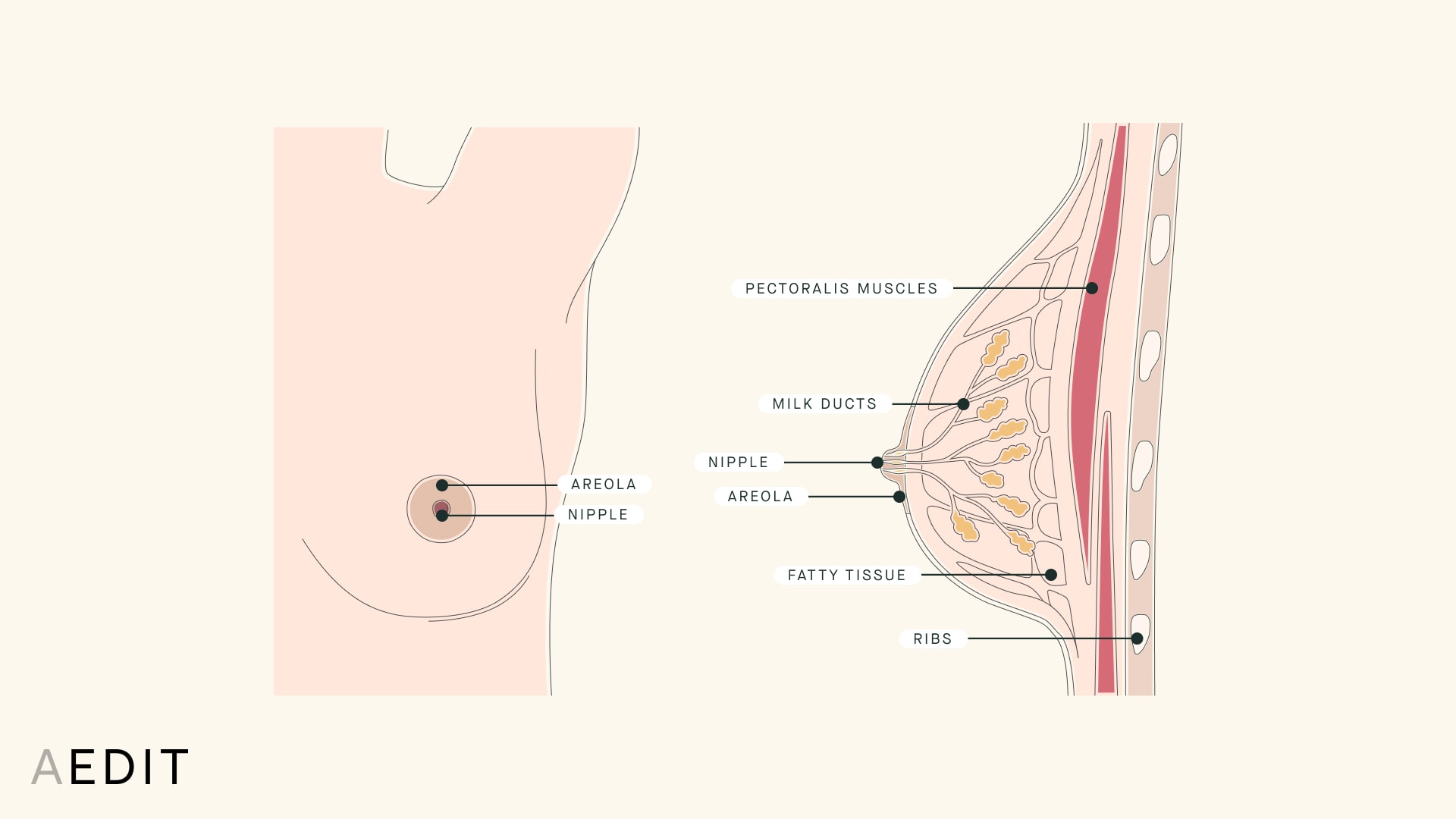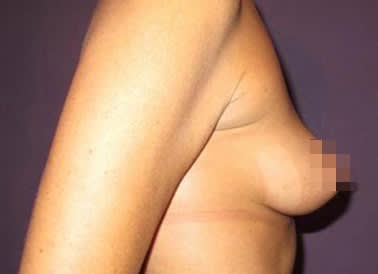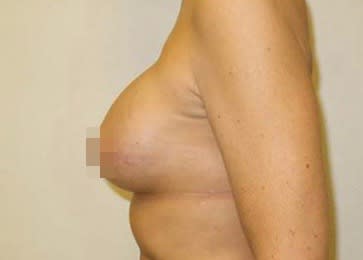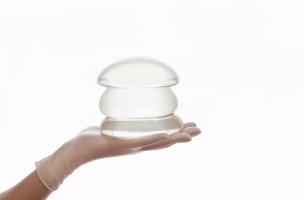
The Skinny
While not as popular as breast augmentation, which consistently ranks as one of the most-performed cosmetic surgery procedures in the U.S., the American Society of Plastic Surgeons found that some 50,000 women underwent a breast reduction procedure in 2018 alone. Another 30,000 women, meanwhile, chose to have their breast implants removed.
Due to genetics, gravity, weight change, a previous augmentation procedure, or some combination of them all, women with large breasts may experience both aesthetic and medical concerns (think: neck, back, and shoulder pain, trouble sleeping or exercising, etc.). Additionally, women who have undergone a previous breast procedure but are no longer happy with the results seek refinement, restoration, or even removal.
Regardless of the concern, cosmetic breast reduction and breast revision surgeries exist to create the ideal chest shape and size (read our guide to Breast Shape & Size Concerns). A consultation with a board certified plastic surgeon can determine which procedure would be most appropriate for an individual candidate.
AEDIT
Before & After Images by Provider
This Album Contains Explicit Content. Sign up or Login to Browse Real Before & Afters
Before & After Images by Provider
Breast Reduction & Revision Solutions
The Specifics
Who might consider breast reduction or breast revision procedures?
Reduction mammaplasty (i.e. breast reduction) is used to remove excess tissue from the breasts of women who perceive their chests to be too large. While ideal breast size and breast shape is often a matter of perception, large breasts can interfere with a woman's quality of life. Whether the size of the chest is the result of genetics, pregnancy, weight change, or a previous augmentation procedure, the heaviness of the breasts can lead to pain, trouble sleeping, difficulty exercising, and more. For women experiencing these symptoms, breast reduction procedures can provide relief.
Female Breast Anatomy

As it relates to patients who have previously undergone a breast procedure (think: breast augmentation or breast lift), revision may be needed down the line due to aging or lifestyle changes like pregnancy, breastfeeding, or weight changes. The most common revision is a breast implant removal, which involves taking out the implants and undoing the effects of the breast augmentation.
What can you expect from breast reduction or breast revision?
Breast reduction procedures can be performed alone or in conjunction with a breast lift (check out guide to Breast Lift Solutions) to eliminate excess skin and breast tissue and improve sagging and stretching. Generally speaking, there are three incision techniques employed to remove the excess fatty tissue depending on size and shape of the patient's breasts and her desired results.
Depending on the procedure recovery times will vary, however, generally recovery takes place over four to six weeks. Pain, swelling, drainage, and sensitivity are common side effects of breast reduction procedures. Results are permanent and typically fully visible within a month or so. To better understand the healing and downtime associated with the procedure, check out our complete guide to breast reduction recovery.
The nipple is usually preserved and reattached following all reduction procedures, except in extreme cases, and the results are permanent (though they can be impacted by weight changes and ages). While the scars from a periareolar procedure are usually concealed by the areola, scarring from vertical and inverted-t surgeries reflect their names (i.e. lollipop and anchor). With proper aftercare, scars will fade over time.
Breast revision cases, meanwhile, depend on the type of procedures a patient has previously undergone. For women who have had an adverse reaction to their breast implants or no longer like the aesthetic, the implants can be removed along with any scar tissue. New implants can be inserted or a breast lift can be performed to address any sagging.
Additionally, patients who have had a lumpectomy or mastectomy procedure either preventatively or as part of treatment for breast cancer may consider reducing or revising the size and shape of their chest during the breast reconstruction process.
When should you consider a breast reduction or breast revision procedure?
Women who are in good health and dealing with either aesthetic concerns or medical issues (like pain) related to large breasts may be good candidates for a breast reduction procedure. For patients who are unhappy with the results of a previous procedure once they have fully healed, a breast revision surgery may be in order.
As with any breast procedure, women may want to consider the timing as it relates to having children and breastfeeding. Pregnancy causes fluctuations in breast volume that can alter or impede the results. Some plastic surgeons may recommend postponing procedures until a patient is done having children and breastfeeding, but the decision is a personal one.
Why should you consider a breast reduction or breast revision procedure?
Any woman experiencing impacts on her quality of life secondary to excessive breast size would benefit from a conversation with a board certified plastic surgeon about breast reduction. Additionally, aesthetic concerns related to breast size or breast shape as the result of a previous surgery can be effectively addressed by breast revision procedure.
Breast Reduction and Revision Procedures
Breast reduction and breast revision allow women to reduce or refine their breast volume, breast shape, and breast size to both enhance appearance and quality of life. Breast reduction surgeries are usually performed under general anesthesia and necessitate recovery time, but the results are immediate and permanent. Breast revision procedures depend on the needs of the patient, but breast implant removal surgeries offer similarly long-lasting results.The Takeaway
Breast reduction and breast revision procedures can address a myriad of cosmetic and medical concerns related to large, heavy breasts or the results of previous procedures like breast augmentations or breast lifts. A board certified plastic surgeon can determine which incision pattern and procedure is most appropriate.













